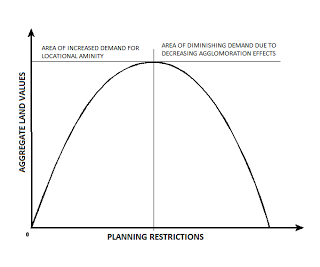From Wiki
"The tragedy of the commons is an economic theory of a situation within a shared-resource system where individual users acting independently according to their own self-interest behave contrary to the common good of all users by depleting that resource through their collective action."
We all understand the concept of the Tragedy of the Commons. Today, most of us know that over fishing and deforestation are symptomatic of this.
In the case of fish stocks, we have recognised that they are a common resource which needs to be regulated in order to achieve a sustainable level of “catch maximisation”.
So, like all things there is a Laffer Curve, by which to the left of the curve there aren't enough fish being caught to maximize yields, and to the right too many for the stocks to be sustainable.
These is why we have quotas. Quota systems are not the most efficient way of allocating the rights to catch fish, but that's a separate issue (an auction system would be better, but for some reason, Governments love grandfathering property rights to natural resources). Point is, we no longer allow a fishing free-for-all around our coasts.
Our shared environment, is also a common resource. And without the right framework of property rights and regulations, will lead to an over consumption of horizontal and vertical location, lowering our stock of wealth and welfare.
As land values are derived from the efficient exploitation of agglomeration effects on one hand(development) and a preference for spending on locational amenity over alternative goods and services on the other (preservation/enhancement), there is a sweet spot for the maximisation of our stock of wealth and welfare, which can be measured as the aggregate rental value of land (location). In other words there will also be a Laffer Curve of planning.

The trouble is that while high aggregate land values are a good thing, they go bad when capitalised into private rental incomes and selling prices because they are not spread evenly throughout society. This not only transfers incomes from the young and the poor to the elderly and the rich, lowering the discretionary incomes of typical working households, but causes excessive vacancy, under occupation, land banking and urban sprawl.
The solution to this are just property rights, whereby we equally share the value agglomeration effects and good planning gives to locations, via a 100% tax on it’s rental value.
As the State would be collector of rents on our behalf, it must therefore align itself with our interests in order for it to maximise revenues in order to pay for public services. In other words, it would have to get very interested in the subject in finding that planning sweet spot, as it would be competing for our spending (LVT is about choice, not coercion) against privately provided goods and services.
It’s not that an LVT causes more or less development, but the right kind of development where it is most needed.
Efficient markets are not the same as "free-for-all" markets.